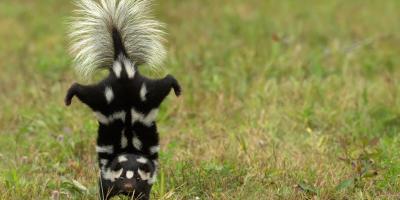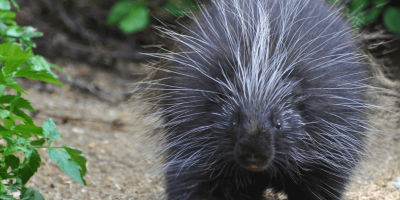Wildlife Woes: Mating Season

The potential pressure from wildlife looking for harborage in homes doesn’t end with the chilly announcement of winter. With New England’s new icy grip, pressure increases as breeding seasons commence for wildlife creatures such as squirrels, skunks and raccoons during January and February.
Squirrels, skunks and raccoons each begin their breeding seasons between January and February, which is why squirrel presence in homes become more pronounced in the winter. As a result, homeowners will typically hear noises coming from the attic and wall voids of their homes. The home-invasive species include the Eastern gray squirrel, which may be heard at dawn or dusk; the Northern & Southern flying squirrel, which may be heard in the evening; and the American red squirrel, which may be heard during the day.
After breeding season ends, litters are born between March and April. Pressure increases again post-breeding season, due to expecting mothers seeking safe, warm areas to raise their young. Squirrels will take advantage of structural voids by chewing holes in vent screening, roof ridge vent covers, and gaps in chimney flashing. Dormer joints and other roof connection points will also inevitably be tested by transient squirrels.

Once inside, squirrels waste no time making themselves comfortable. After giving birth, mothers spend more time inside structures than any other time of the year. Insulation makes for ideal nesting material, and these new invaders take advantage of this by balling-up or trampling down on it as they make the space their own. Conducive signs of squirrel activity may include large tunnels driven through insulation, and selective areas of insulation saturated with fecal and urine waste.
As members of the rodent family, squirrels must satisfy their desire to gnaw; which leaves electrical wiring, wood paneling, and other important aspects of the property at risk. Homeowners that believe they may be dealing with squirrels inside their home are discouraged from sealing them out on their own, as it’s always best to leave these jobs to a trained professional. One reason for this is that sealing out a mother and separating her from her immobile and dependent litter may result in greater structural damage from her attempts to regain access. This will also increase the chances of the abandoned litter perishing in the home, resulting in foul odors and additional pest issues for the homeowner.

February isn’t just for tree-dwelling lovers, either. Valentine’s month also marks the peak breeding season for striped skunks, as traveling males will begin seeking out mates. During this time, wayward skunks attempt to access the undersides of sheds, porches, or dirt crawl spaces in search of female companions. Females, known to den together during their winter hiatus, emit strong spritzes of their stereotypical “skunk-smell,” both to ward off aggressive male counterparts and also announce their denning location to the more attractive bachelors. Homeowners previously unaware of nearby skunk dens during the fall months may suddenly become well-aware come February, with the oily emittance of skunk odor wafting through backyards and adjacent properties.
In addition to squirrels and skunks, raccoons will also attempt to manipulate and access dwellings at this time to give birth to new litters. For their size, raccoons are very powerful and incredibly resourceful; making short work of weak points around home trim, exposed foundations, and roof/chimney joints.
If you suspect uninvited wildlife in your home, or just want a professional to keep an eye out for potential entry points and signs of activity, give JP Pest Services a call.
Nuisance wildlife on your turf?
*Limit one per property. Restrictions and limitations may apply. Contact customer support specialist for details.



